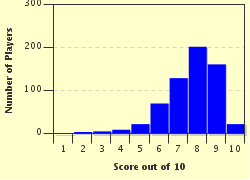Quiz Answer Key and Fun Facts
1. This fruit is quite amazing. Native to the Mediterranean and Indian regions of the world, it has been used for thousand of years for a wide range of treatments. The first part of the word sounds as though it's related to an apple. What is it?
2. This is an interesting fruit we don't seem to hear much about in the western world. In Australia anyhow. The higher the altitude in which it grows, the sweeter its taste. Colds, sore throats and coughs in particular have long been treated by its consumption. What is this almost talkative fruit?
3. Because this delicious fruit is less allergenic than most other fruits, it is one of the first foods to be introduced as a solid food for babies. Which one is it?
4. Greatly overlooked, this fruit which is native to temperate areas of the world, has been thoroughly investigated since the onset of the 21st century for its potentially powerful medicinal qualities. With a first syllable sounding as though it's related to a donkey, and a second syllable that's quite sharp, can you guess what it is?
5. This fruit, which looks similar to a pear, produces an exquisite pale pink flower before bearing the fruit. It has been studied for some years for its possible medicinal qualities. What is it?
6. Astonishingly so, the fruit that grows on this, its pictured plant, is slightly radioactive. What is it?
7. This fruit pongs to high heaven and has been banned from many tourist buildings, but it is excellent for bringing down a high fever. What is its name?
8. This fruit has long been used in many countries as a natural contraceptive. What is its name?
9. Preliminary research indicates that consumption of this fruit may be beneficial in the treatment of hypertension. Can you name it?
10. This just has to be the fruit from THAT tree in the Garden of Eden. It can be very good for you, but also for some people, can have quite the opposite effect. What is it?
Source: Author
Creedy
This quiz was reviewed by FunTrivia editor
WesleyCrusher before going online.
Any errors found in FunTrivia content are routinely corrected through our feedback system.

